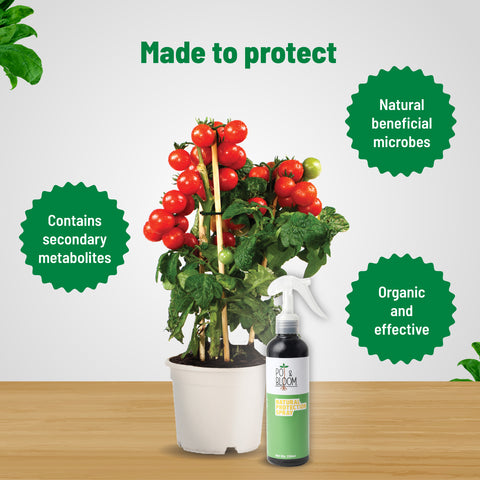Having your vegetable garden at home can bring you joy. It will help you live sustainably by enjoying fresh, natural produce while feeling a connection with nature. Just picture picking tomatoes, crunchy lettuce, and fragrant herbs straight from your garden! Whether you have a backyard or a cosy balcony, there are techniques to fit different areas and tastes. Below are five proven ways to grow a vegetable garden at home, which guarantees you a yield.
Here are 5 Methods Required for Growing a Vegetable Garden at Home:
1. Conventional Gardening:
Ground gardening is all about planting veggies in the soil of your garden or backyard. This method of home vegetable garden is best for those who have plenty of space and top-notch soil.
Steps
- Picking the Right Spot: Find a spot that gets at least 6-8 hours of sunlight each day.
- Prep Your Soil: Check your soil's pH and nutrient levels. Add some goodness, like compost, to boost fertility and drainage.
- Planting Time: Plant seeds or move seedlings based on how much space they need.
-
Watering: Keep those veggies hydrated, use mulch to keep the moisture in, and pull out those weeds to give your plants room to thrive.
Benefits
- Make the most of your garden area.
- Offers a range of veggie options.
- Supports a soil environment.
2. Gardening in Raised Beds:
Raised bed gardening is about growing veggies in soil that sits above ground level within a frame made of wood, stone, or metal. This method is perfect for spots with soil quality or limited space.
Steps:
- Building Your Beds: Create beds with dimensions that make it easy to reach the centre ( around 3-4 feet).
- Filling with Soil: Use a notch soil mix by combining garden soil, compost, and organic materials.
- Planting: Plant seeds or seedlings based on their growth requirements.
-
Watering and Upkeep: Water, as necessary, apply mulch to retain moisture and regularly remove weeds.
Benefits:
- Soil management and drainage.
- Decreased weed proliferation.
-
Convenient access with bending is needed for planting and upkeep.
3. Container Gardening:
Container gardening is excellent for spaces like balconies, patios, or rooftops where you can grow vegetable gardens in small pots.
Steps:
- Choosing Containers: Pick containers with drainage holes and adequate size for the vegetables you wish to cultivate.
- Using Potting Mix: Fill the containers with quality potting mix containing compost and organic materials.
- Planting Sow: Transplant seedlings into the containers.
-
Watering and Care: Ensure watering since containers dry out faster than garden beds and fertilise as required.
Benefits:
- Perfect for areas and city settings.
- Movable and rearrangeable.
- Offers control over soil quality.
4. Vertical Gardening:
Vertical gardening is a space technique involving growing vegetables vertically on structures like trellises, walls, or vertical planters. This technique is excellent for making the most of space. Here are the steps to follow:
- Setting up Supports: Use trellises, planters, or wall-mounted systems to help climb or vine vegetables.
- Choosing Plants: Pick vegetables that are suitable for growing, like tomatoes, cucumbers, peas, and beans.
- Planting: Plant your vegetables at the base of the supports or in planters.
-
Watering and Maintenance: Make sure to water your plants to maintain moisture distribution.
Benefits:
- Maximises the use of space.
- Helps reduce ground pests and diseases.
- Improves air circulation and exposure to sunlight.
5. Hydroponic Gardening:
Hydroponic gardening involves growing vegetables in a water solution without using soil. This method works well for both outdoor setups. It can be very productive.
Steps:
- Setting up a Hydroponic System: Choose a system like nutrient film technique (NFT), water culture (DWC), or drip system.
- Preparing Nutrient Solution: Mix water with nutrients.
- Planting: Place seedlings in the system, ensuring their roots come into contact with the solution.
-
Monitoring and Maintenance: Regularly check levels, pH balance, and water levels. Ensure sufficient lighting if growing indoors.
Advantages
- Growing without soil helps in controlling soil-borne pests and diseases.
- Efficient use of water leads to plant growth.
- Ideal for cultivation.
Conclusion:
Cultivating a garden in your backyard provides a range of advantages, such as enjoying fresh produce and promoting overall well-being. Whether you opt for ground planting raised beds, pots, vertical gardening, or hydroponics, each approach comes with its perks and can be customised to match your available space and daily routine. By picking the method that best fits your requirements, you can relish the journey of growing your vegetable garden at home.




















Comments (0)
There are no comments for this article. Be the first one to leave a message!